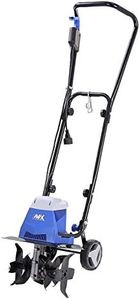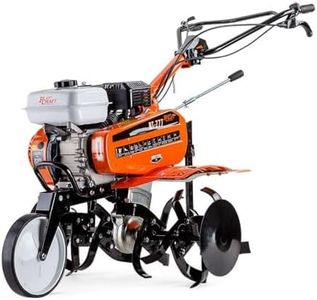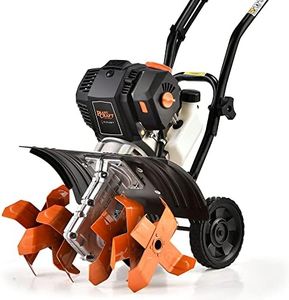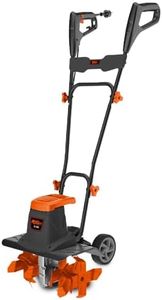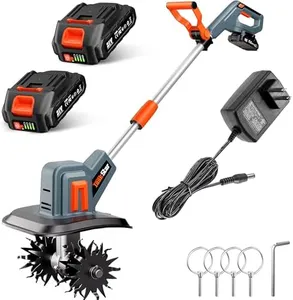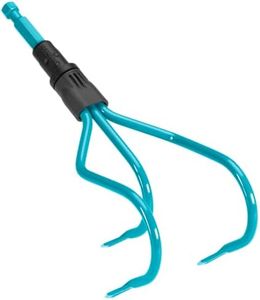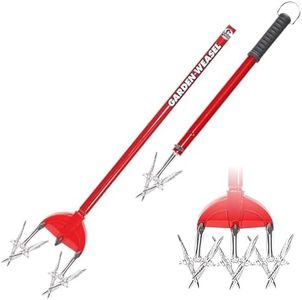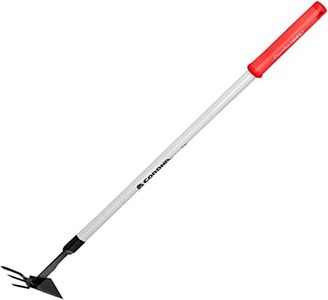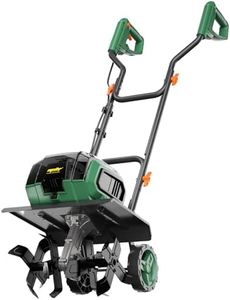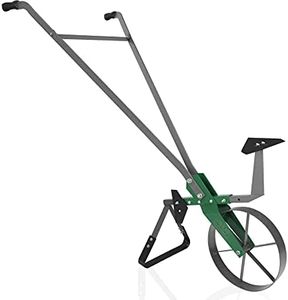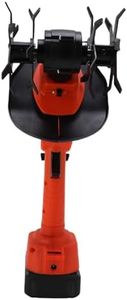We Use CookiesWe use cookies to enhance the security, performance,
functionality and for analytical and promotional activities. By continuing to browse this site you
are agreeing to our privacy policy
10 Best cultivators
From leading brands and best sellers available on the web.By clicking on a link to a third party's website, log data is shared with that third party.
Buying Guide for the Best cultivators
Choosing the right cultivator can make garden and soil work much easier and more efficient. Cultivators are tools used to mix, aerate, and prepare soil for planting, as well as to control weeds between rows of crops. The best cultivator for you will depend on the size of the area you want to work, the type and condition of your soil, and how versatile you want your tool to be. Understanding the main differences between various types and features will help you find a cultivator that suits your gardening style and needs.Power SourceThe power source of a cultivator refers to what makes it work—manual effort, electricity, or gasoline. Manual cultivators depend on your own strength and are ideal for very small gardens or for quick spot work because they're lightweight and low-maintenance, but they're not suitable for large or tough soil areas. Electric cultivators are plugged in or battery operated, making them quiet and easy to start; they're suitable for small to medium gardens and generally lighter soils. Gas-powered cultivators are the most powerful, suited for large gardens and harder or clay soils, but they require more maintenance and are heavier. Choosing the right power source depends on your garden's size and how tough the soil is—manual for small and easy jobs, electric for modest-sized areas with average soil, and gas for big, demanding gardens.
Tilling WidthTilling width is the measurement of how wide an area the cultivator can work in a single pass. Narrow widths, usually under 12 inches, are good for flower beds, small vegetable plots, or working between rows. Medium widths, between 12 and 18 inches, offer a balance—wide enough for general garden work but still maneuverable. Wider widths, over 18 inches, are best for covering large areas quickly, such as major vegetable gardens or preparing big plots. Your work area and the kind of jobs you expect to do should guide your choice: go for a narrow tilling width for precision or tight spots, a medium width for general gardening needs, and a wide tiller if you're working in big, open spaces.
Tilling DepthTilling depth tells you how deep the cultivator blades will dig into the soil. Shallow settings, usually up to 4 inches, are good for loosening soil and mixing in compost or fertilizer without deeply disturbing plant roots. Medium depths, from 5 to 8 inches, are appropriate for most general garden preparations. Deeper tills, over 8 inches, are useful for breaking new ground or working in heavy or compacted soil. Your choice here should depend on your planting needs—shallow for maintenance and surface mixing, medium for most planting prep, and deep for new beds or tough soil.
Weight and ManeuverabilityThe weight of the cultivator affects how easy it is to move and transport, as well as how stable it feels during use. Lightweight cultivators are easy to handle and carry, best for quick jobs and working around plants, but they might struggle in hard or rocky soil. Heavier models offer more power and digging ability, making them better for breaking ground or larger areas, but they can be harder to handle and require more strength to control. Think about how much physical effort you're comfortable with and whether you need a tool that's portable or one that's built for heavy-duty work.
Adjustable Tines/BladesSome cultivators offer adjustable tines or blades, which means you can change their width or depth to suit different tasks. This feature allows for flexibility, enabling you to switch between delicate soil work and heavier tilling. Adjustable tines are especially useful if you want to use your cultivator for different crops or garden sections. If you have varied gardening needs, look for a cultivator with this feature�—otherwise, a fixed tine model may be fine for consistent, repetitive tasks.
